Physics w/Calculus 2 - Induction and Inductance (Ch 29-30)
1/22
Earn XP
Description and Tags
Name | Mastery | Learn | Test | Matching | Spaced |
|---|
No study sessions yet.
23 Terms
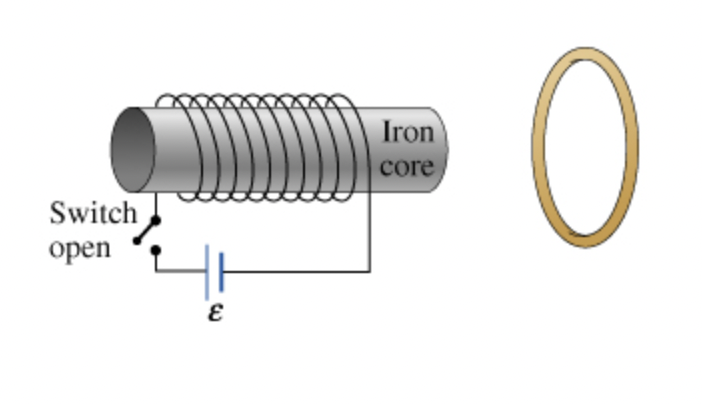
When the switch is open, which of the following statements about the magnetic flux through the wire loop is true? Assume that the direction of the vector area of the wire loop is to the right.
A. There is no magnetic flux through the wire loop
B. There is a positive flux through the wire loop
C. There is a negative flux through the wire loop
A
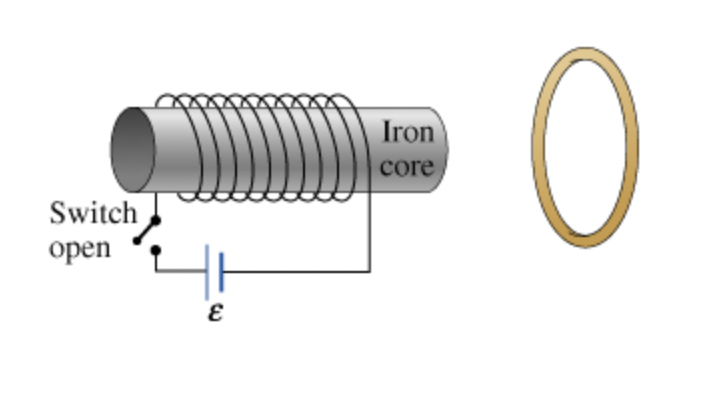
What is the direction of the induced current in the wire loop (as seen from the left) when the switch is open?
A. There is no induced current
B. The induced current is clockwise
C. The induced current is counterclockwise
A

Now the switch on the electromagnet is closed. What is the direction of the induced current in the wire loop immediately after the switch is closed (as seen from the left)?
A. There is no induced current
B. The induced current is clockwise
C. The induced current is counterclockwise
C
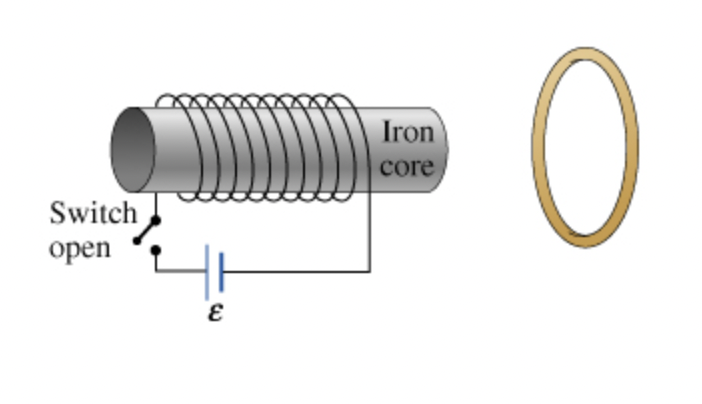
When the switch on the electromagnet is reopened, the magnitude of the external magnetic flux through the wire loop ________
A. remains constant
B. increases
C. decreases
C
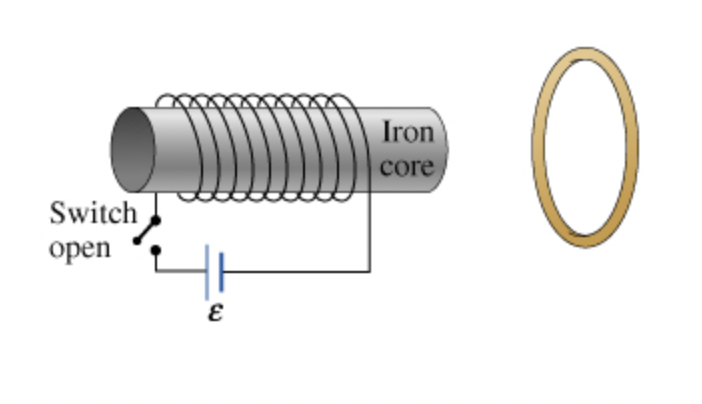
When the switch on the electromagnet is reopened there is a ________ current induced in the loop (as seen from the left).
A. a clockwise
B. a counterclockwise
A

The switch on the electromagnet, initially open, is closed. What is the direction of the induced current in the wire loop (as seen from the left)?
A. There is no induced current
B. The induced current is clockwise
C. The induced current is counterclockwise
B
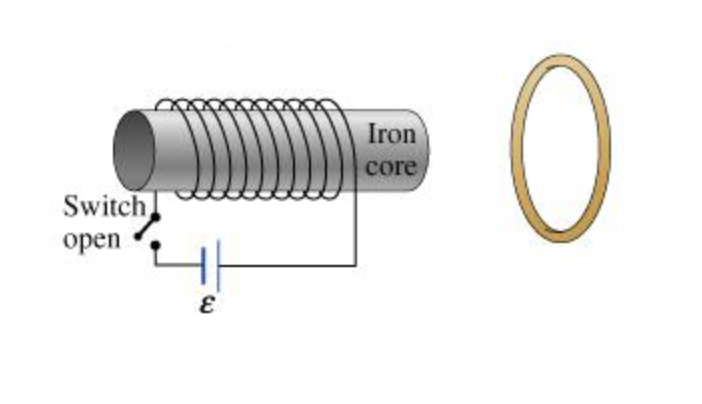
When the switch on the electromagnet is reopened, the magnitude of the external magnetic flux through the wire loop ________
A. remains constant
B. increases
C. decreases
C
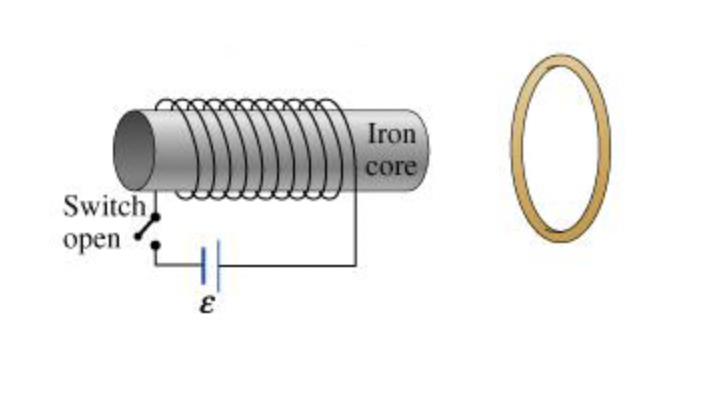
When the switch on the electromagnet is reopened, there is ___________ current induced in the loop (as seen from the left).
A. a clockwise
B. a counterclockwise
B
Which of the following statements are true concerning electromagnetic induction?
A. It is possible to induce a current in a closed loop of wire remaining at rest and located in a uniform magnetic field
B. It is possible to induce a current in a closed loop of wire located in a uniform magnetic field by either increasing or decreasing the area enclosed by the loop
C. It is possible to induce a current in a closed loop of wire without the aid of a power supply or battery
D. It is possible to induce a current in a closed loop of wire by changing the strength of a magnetic field enclosed by the wire
E. It is possible to induce a current in a closed loop of wire by change the orientation of a magnetic field enclosed by the wire
B, C, D, E
Which of the following statements are true regarding electric generators?
A. An electric generator creates a time-dependent induced voltage
B. An electric generator converts mechanical energy into electrical energy
C. An electric generator is used to increase or decrease an alternating current voltage
D. An electric generator converts electrical energy into magnetic energy
E. An electric generator creates a time-independent induced voltage
A, B
A circular loop of wire lies flat on a level table top. A bar magnet is held stationary above the circular loop with its north pole point downward. As viewed from above, in what direction does the induced current flow in the loop of wire?
A. An induced current flows clockwise in the loop of wire
B. The direction of the induced current cannot be determined from the given information
C. An induced current flows counterclockwise in the loop of wire
D. No current is induced in the loop of wire
D
A circular loop of wire lies flat on a level table top in a region where the magnetic field vector points straight upward. The magnetic field suddenly vanishes. As viewed from above, in what direction does the induced current flow in the loop of wire?
A. An induced current flows counterclockwise in the loop of wire
B. No current is induced in the loop of wire
C. The direction of the induced current cannot be determined from the given information
D. An induced current flows clockwise in the loop of wire
A
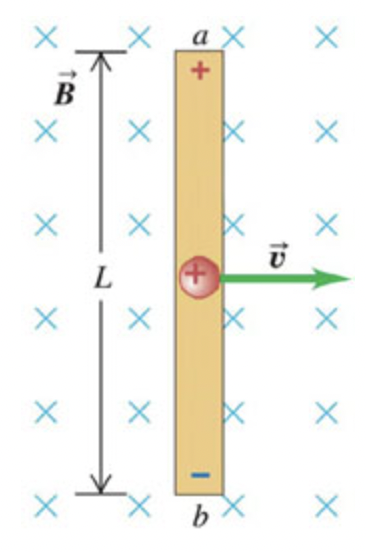
In the figure, a conducting rod is shown moving in a uniform magnetic field . Which of the following statements are true?
A. An electric field is established in the rod directed from point a to point b
B. The magnitude of the potential difference in the rod is proportional to the strength of the magnetic field
C. The magnitude of the potential difference in the rod is inversely proportional to the length L of the rod
D. The magnitude of the potential difference in the rod is proportional to the velocity v of the rod
E. The free charges in the rod are acted upon by a magnetic force
A, B, D, E
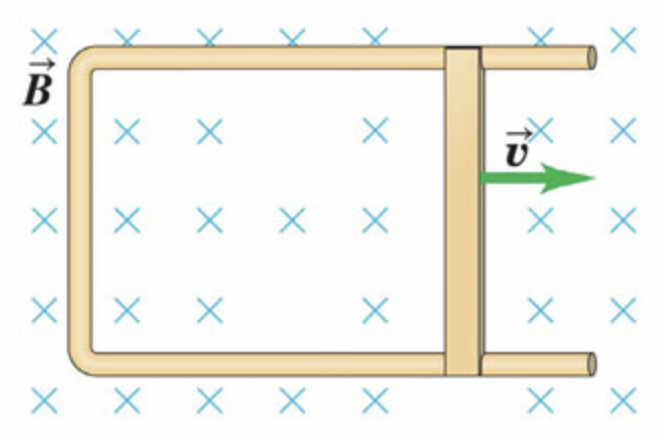
In the figure, a conducting rod is shown moving to the right along U-shaped conducting rails. The apparatus is in a uniform magnetic field perpendicular to the plane of the figure. As viewed from above, in what direction does the induced current flow in the U-shaped apparatus?
A. An induced current flows clockwise in the U-shaped apparatus
B. An induced current flows counterclockwise in the U-shaped apparatus
C. The direction of the induced current cannot be determined from the given information
D. An induced current does not flow in the U-shaped apparatus
B
A resistor, an inductor, and a switch are all connected in series to an ideal battery of constant terminal voltage. Suppose at first the switch is open, and then, at some initial time t = 0, it is closed. Which of the following statements are true?
A. At the instant the switch is closed, the current reaches its steady-state value
B. At the instant the switch is closed, the current begins to increase at a rate that depends upon the value of the inductance of the inductor
C. The steady-state value of the current depends on the inductance of the inductor
D. The steady-state value of the current depends on the resistance of the resistor
B, D
A resistor, an inductor, and a switch are all connected in series to an ideal battery of constant terminal voltage. What does the time constant for the circuit represent?
A. The time constant represents the time required for the current to reach 37% of the maximum current
B. The time constant represents the time required for the current to reach 75% of the maximum current
C. The time constant represents the time required for the current to reach 99% of the maximum current
D. The time constant represents the time required for the current to reach 25% of the maximum current
E. The time constant represents the time required for the current to reach 50% of the maximum current
F. The time constant represents the time required for the current to reach 63% of the maximum current
F
An inductor is connected in series to a fully charged capacitor. Which of the following statements are true?
A. The stored electric field energy can be less than the stored magnetic field energy
B. The stored electric field energy can be greater than the stored magnetic field energy
C. As the capacitor is discharging, the current is increasing
D. As the capacitor is charging, the current is increasing
E. The stored electric field energy can be equal to the stored magnetic field energy
A, B, C, E

Find the direction (clockwise or counterclockwise) of the current induced in loop 𝐴 if 𝐼 is steadily decreasing.
A. The current in loop 𝐴 is counterclockwise
B. The current in loop 𝐴 is clockwise
C. The current in loop 𝐴 is zero
B
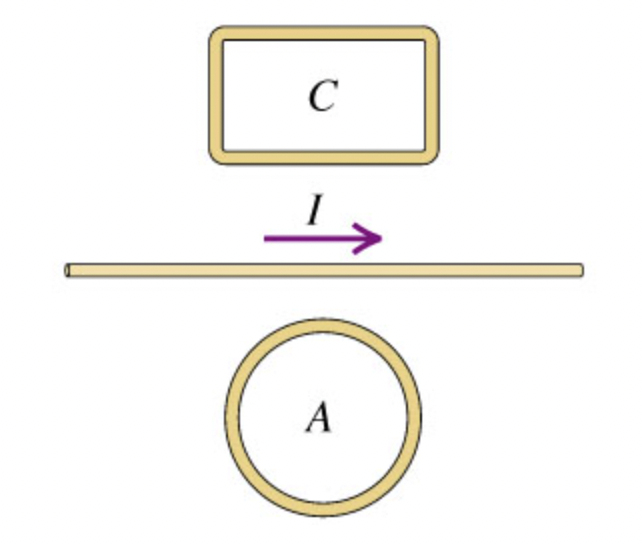
Find the direction (clockwise or counterclockwise) of the current induced in the loop 𝐶 if 𝐼 is steadily decreasing.
A. The current in loop 𝐶 is clockwise
B. The current in loop 𝐶 is counterclockwise
C. The current in loop 𝐶 is zero
B
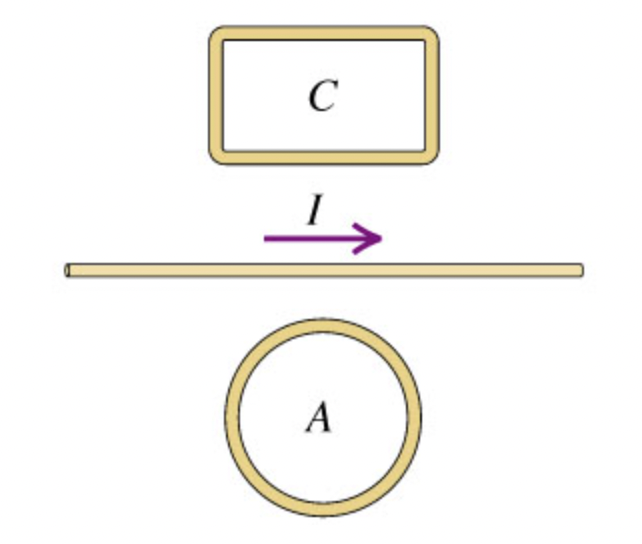
While 𝐼 is decreasing, what is the direction of the net force that the wire exerts on loop 𝐴?
A. The wire exerts an upward force on loop 𝐴
B. The wire exerts a downward force on loop 𝐴
C. The wire exerts no force on loop 𝐴
A
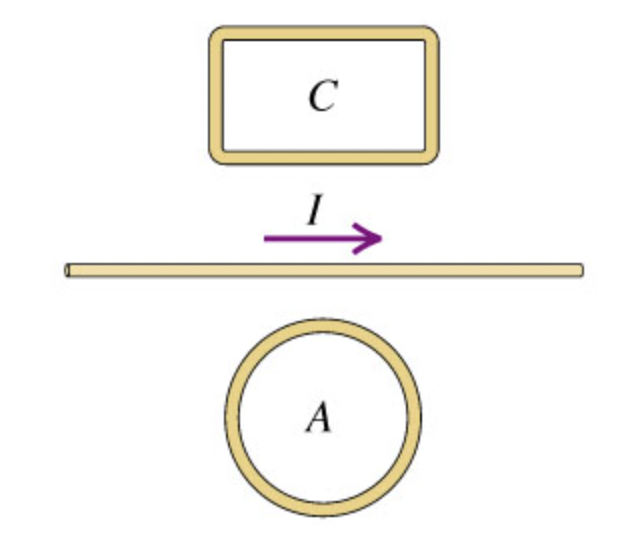
While I𝐼 is decreasing, what is the direction of the net force that the wire exerts on loop 𝐶?
A. The wire exerts an upward force on loop 𝐶
B. The wire exerts a downward force on loop 𝐶
C. The wire exerts no force on loop 𝐶
B
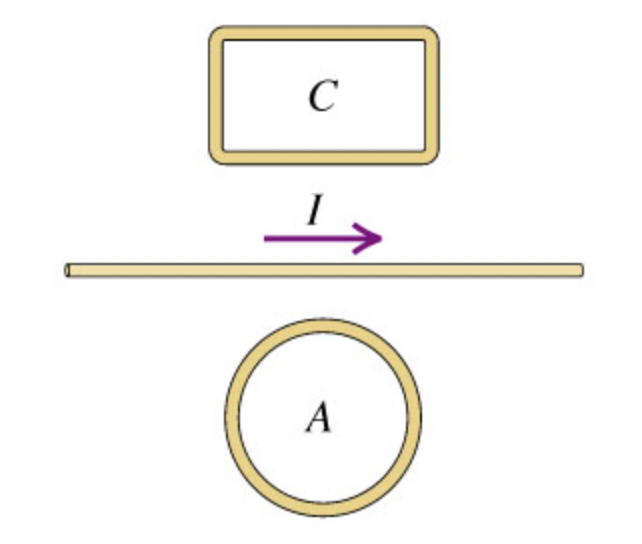
When the current in the wire is decreasing the magnitude of the magnetic flux in the loops is ________
A. decreasing
B. increasing
A
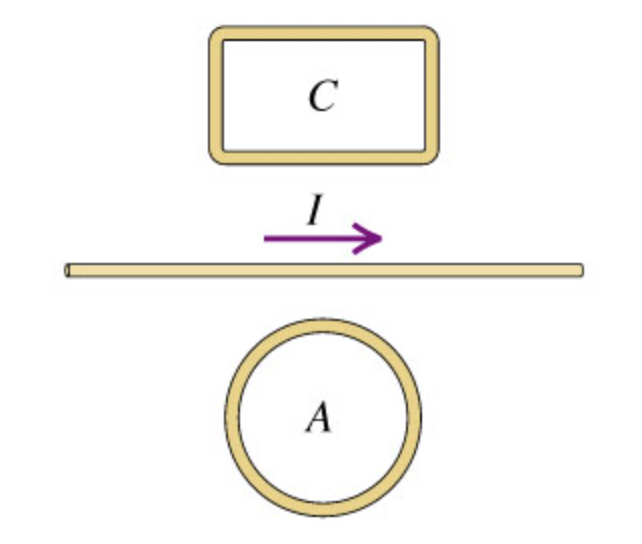
Induced currents in the loops and the forces exerted on them are directed so they _______ this change.
A. oppose
B. support
A